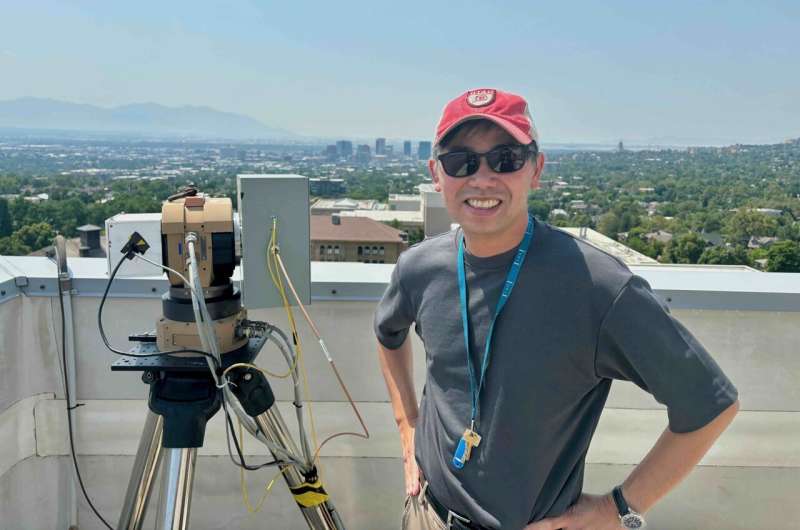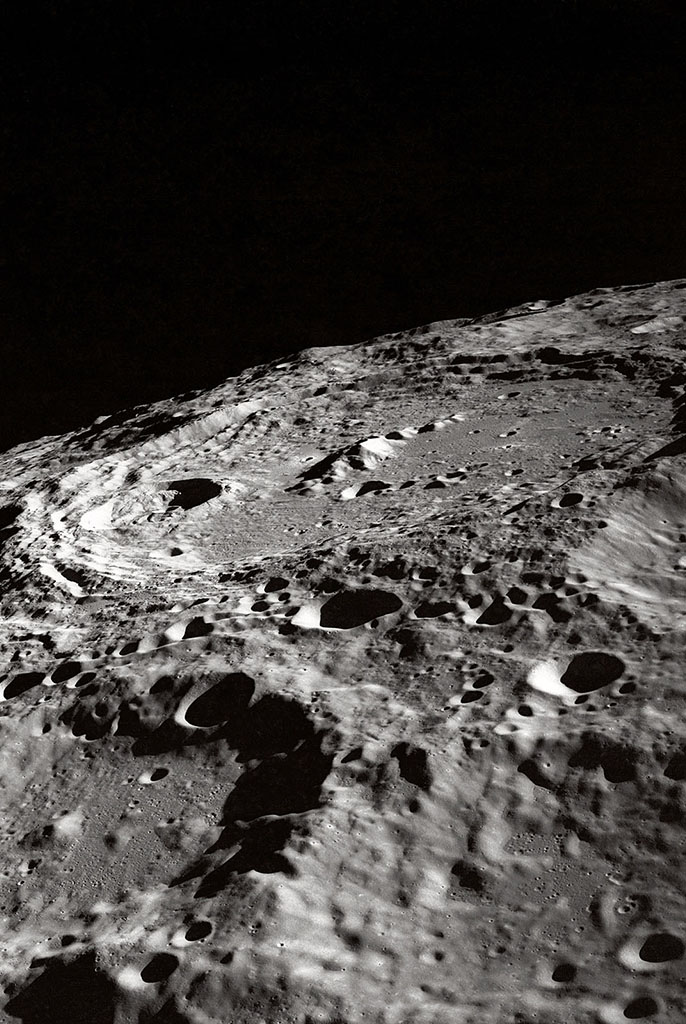They may both be Olympic host cities, but Salt Lake City and Los Angeles, the major population hubs of their respective states, are very different places. However, they both experience poor air quality and share valley topography that traps pollutants during weather inversions.
Utah and Southern California differ sharply in their approaches to this problem, with the latter implementing more stringent regulations and fuel standards aimed at reducing emissions from motor vehicles.
New research from the University of Utah, in collaboration with University of California scientists, shows California’s earlier adoption of stricter rules may have helped lower concentrations of one pollutant—carbon monoxide, or CO—on LA freeways.
The paper is published in the journal Environmental Science & Technology.
“We wanted to see empirically how emission characteristics have changed in these two cities over time,” said co-author John Lin, a Utah professor of atmospheric sciences. The research was initiated by Francesca Hopkins, a professor of climate change and sustainability at UC Riverside, and conducted with colleagues at UC Irvine.
The study relied on measurements taken by mobile labs that drove up and down LA and Salt Lake freeways for a few weeks in the summers of 2013 and 2019, with follow-up data gathering in Los Angeles over the next two summers to observe the effect of the COVID pandemic.
The study especially focused on the ratios of CO to CO2 observed by the mobile labs. These two gases are co-emitted from fossil fuel combustion and their ratio is an indicator of the efficiency of that combustion, since efficient internal combustion engines would convert more of the fuel to CO2 instead of CO. The more CO emitted relative to CO2, the less efficiently the fuel is being burned.
“The CO-to-CO2 ratios appear to increase in Salt Lake, but they decreased in LA, and, of course, the question is ‘Why?'” said Lin, who serves as associate director of the U’s Wilkes Center for Climate Science & Policy.

John Lin, professor of atmospheric sciences, on the roof of the University of Utah’s Browning building where a phalanx of air quality monitoring instruments are stationed. © Brian Maffly, University of Utah
“What’s different between Salt Lake and LA? A lot of things are different. One thing proposed in the paper is the regulation and how much earlier it was adopted in Los Angeles. Salt Lake adopted Tier Three fuel standards not too long after LA, but the fuel wasn’t available in Utah until 2020.”
Lin offered a caveat arising from a yet-to-be-published study, led by one of his graduate students and based on parallel data gathered by stationary monitoring equipment from the Utah Division of Air Quality housed at Hawthorne Elementary School on 700 East, one of Salt Lake City’s busiest streets about a mile east on Interstate 15. Between 2013 and 2019, CO-to-CO2 ratios recorded at this spot declined.
Breathing CO impairs the human body’s ability to circulate the oxygen needed for survival. Indoor CO pollution can literally asphyxiate a person.
Outdoor concentrations rarely reach such a toxic level, but elevated levels can harm those with heart disease, making it difficult for their organs to get enough oxygen, according to the U.S. Environmental Protection Agency. The agency set the 8-hour threshold for ambient levels of CO at 9 parts per million (ppm), or 35 ppm for one hour.
“There are other emissions we could look at, like the ratio of NOx to CO2,” Lin said. “Carbon dioxide is the common denominator because it’s what you get from burning fossil fuels, and the engine undergoes ‘clean combustion,’ when you convert most of the fuel into CO2 and water. I put clean in quotes because CO2 is a greenhouse gas that leads to climate change.”
Discover the latest in science, tech, and space with over 100,000 subscribers who rely on Phys.org for daily insights.
Sign up for our free newsletter and get updates on breakthroughs,
innovations, and research that matter—daily or weekly.
Motor vehicles are the main anthropogenic source of CO in the atmosphere. Nationally, 38% of anthropogenic CO originates from on-road mobile sources, but that portion is higher for Los Angeles and Salt Lake counties, 47% and 56%, respectively, according to the new study.
These metro areas’ transportation fleets are different, with Salt Lake having a higher proportion of trucks, while passenger cars dominate in Los Angeles, and Salt Lake’s cars tend to be older, with a mean age of nine years. And speed limits are higher in Utah. During the study period, in 2015, Salt Lake City freeway speed limits increased by 5 to 10 mph, which may explain some of the increase in CO emissions.
On the emission control side, California adopted mandates for cleaner vehicles and fuels several years ahead of Utah, as well as offered incentives to drivers to replace their older vehicles.
Tellingly, the researchers discovered CO ratios increased in the follow-up testing on LA freeways in the summers of 2020 and 2021 when speeds increased as traffic thinned in the wake of pandemic shutdowns.
More information:
Cindy C. Yañez et al, Contrasting Summertime Trends in Vehicle Combustion Efficiency in Los Angeles, CA and Salt Lake City, UT, Environmental Science & Technology (2025). DOI: 10.1021/acs.est.4c11701
Provided by
University of Utah
Citation:
A emissions tale of two cities: Salt Lake City trails Los Angeles in reducing freeway carbon monoxide levels (2025, February 27)



